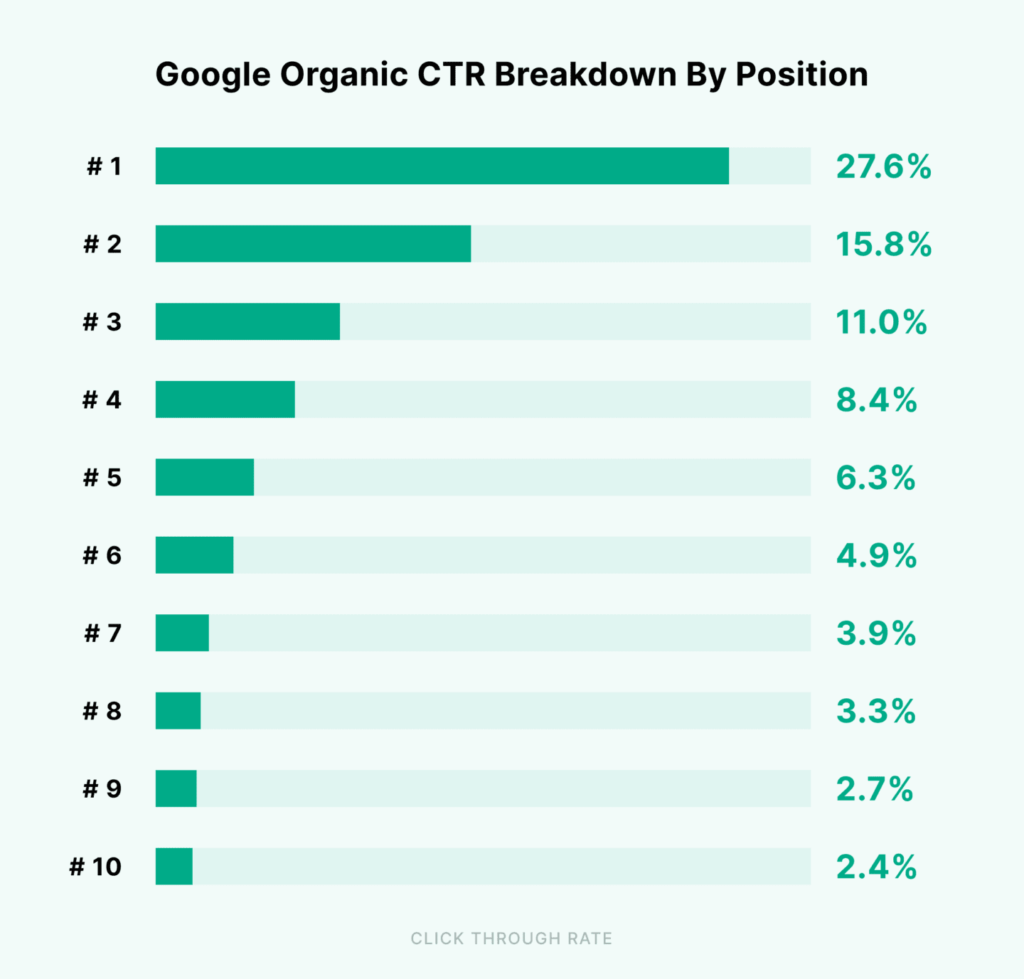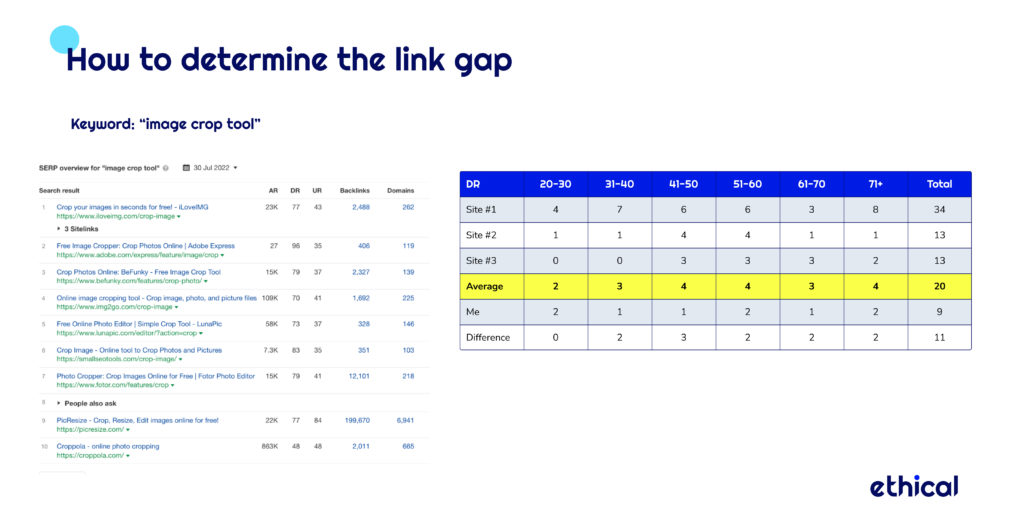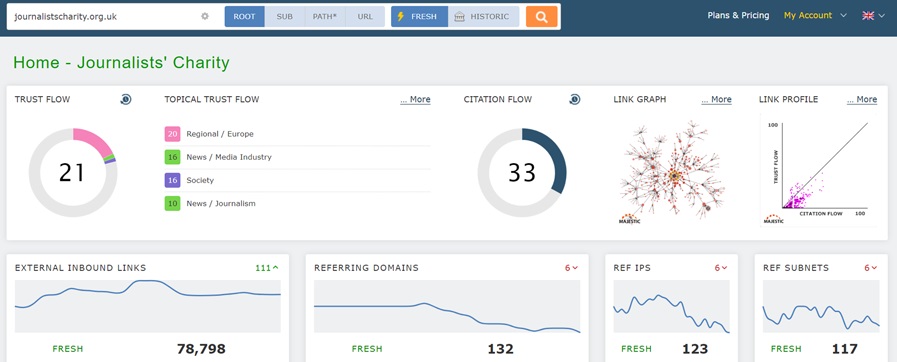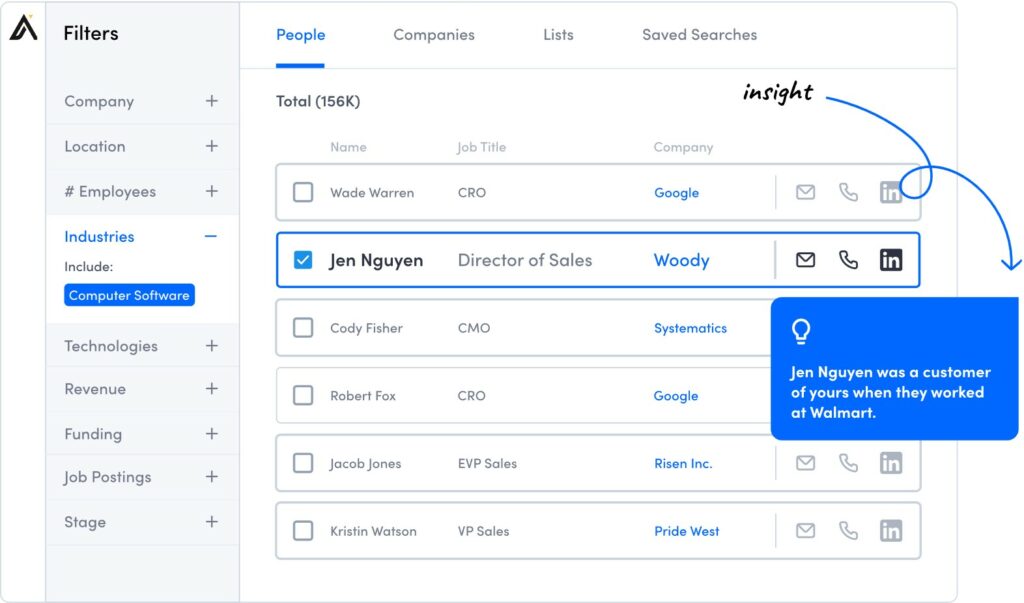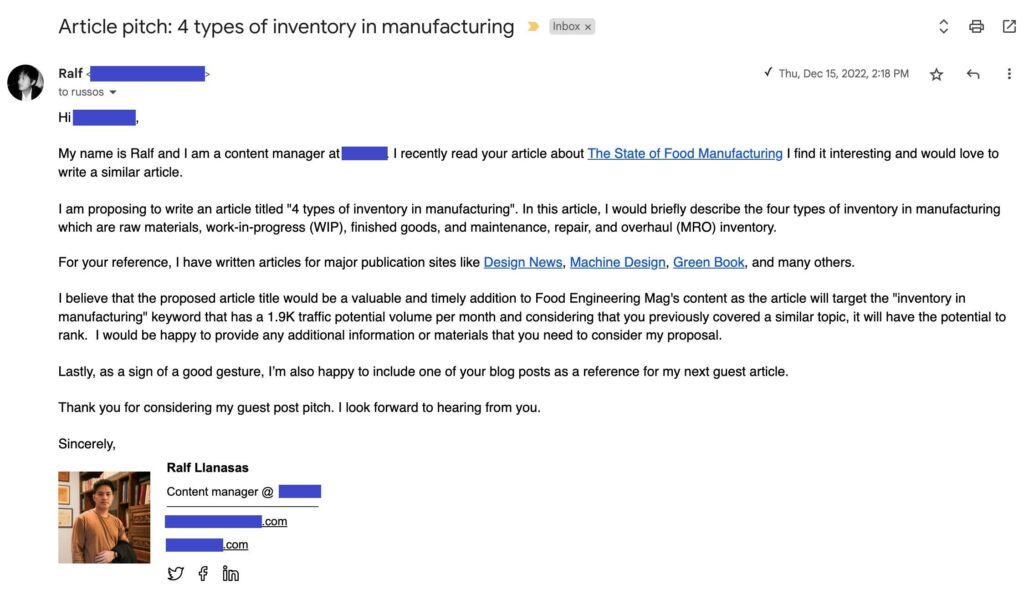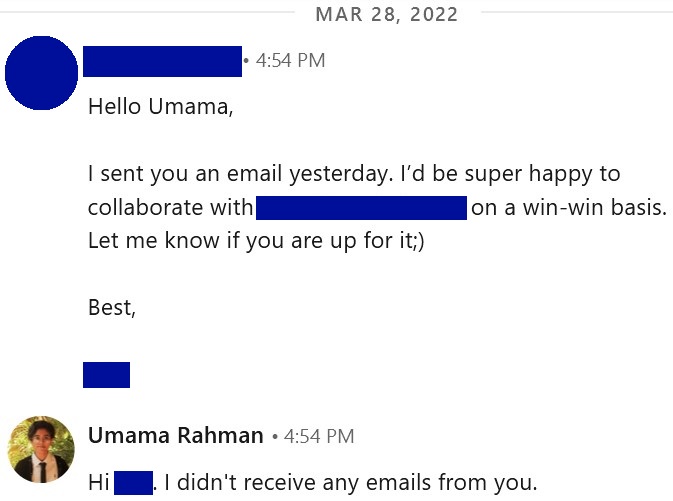Have you ever written and published a fantastic article on your website, expecting thousands of views, but failed to gain the recognition it deserves?
The world wide web is saturated with quality content from top authors, marketers, and experts. So it takes extra effort to make your content stand out from the crowd. There’s nothing wrong with getting a little help sometimes.
SEO outreach helps others notice the hard work and dedication you have put into preparing the content on your website. It is a collaborative effort that involves actively informing others about your business’s online existence.
This article will tell you all there is to know about what SEO outreach is and why it is important for your business’s website and brand image. We will also share with you the ethical way to go about the outreach process, along with some actionable tips to help you perfect your SEO outreach campaign.
What is SEO outreach?
SEO outreach is the process of reaching out to authoritative websites in an attempt to have them link back to all the top-quality content that you have written and published on your website.
The main goal of the SEO outreach process is to build a strong backlink profile for your website so that search engines recognise it as an authoritative source of information in your specific industry or niche so that your website gets priority in search results and ranks higher. This works pretty much the same either you work in SaaS, Fintech or Beauty industry.
While SEO outreach is a resource-intensive process, certain tools in the market can assist you with streamlining and automating your campaign. These include, but are not limited to, the following.
- Majestic SEO
- SE Ranking
- Buzzsumo
- Pitchbox
- Apollo
- Lemlist
- Ahrefs
- Semrush
You don’t need to buy or use all of these tools for your specific SEO campaign. Keep reading to find out which tools can be helpful at what stage of the SEO outreach strategy.
Some businesses like to have in-house marketing teams with multiple SEO and content professionals. Others, especially those operating on a much smaller scale on a limited budget, try to learn and carry out SEO and link-building efforts themselves. This usually means that you need to dedicate a significant chunk of your time and energy towards learning complex new skills that professionals in the field have spent years perfecting.
Both these methods can be costly and time-consuming, especially if your business’s core competency lies in an entirely different domain, such as software development, fintech, or manufacturing.
That’s why a lot of businesses outsource their SEO outreach and link-building activities to professional SEO firms. It is more time-saving and cost-effective than hiring multiple experts full-time or spending many hours daily learning the art of SEO instead of focusing on your core business.
The importance of SEO outreach
There are four main goals of an SEO outreach campaign which revolve around link building, digital visibility, and fostering valuable relationships. Let’s explore the importance of a successful outreach strategy.
Achieve high ranks on popular search engines
The first step towards fulfilling the end goals of any SEO campaign revolves around ranking your website in the topmost positions in search engine results. Link building is a major contributing factor to higher SERP ranks, which is why SEO outreach campaigns are pivotal to your business’s online presence, given that your website content is worthy of being positioned higher than competing results.
Building links to your website boosts your domain authority. It proves that your website is relevant to the industry, niche, or topic in which you claim expertise. The content you publish can thus be quoted as coming from a reliable source that knows what it’s talking about.
Keep content visibility steady
Gone are the days when websites could employ certain hacks to cheat the Google search algorithm. If you do that, you will either get severely penalised or end up forgotten in some dark corner of the world wide web.
With search engine results becoming increasingly competitive, it is simply not enough to use shortcuts to rank once and then halt all your SEO efforts. With each algorithm update, Google becomes better at detecting spam links and manipulative behaviour.
Long-term, ongoing SEO outreach efforts are required if you want to consistently rank on search engine results pages and keep your competitors at bay.
A good SEO outreach strategy will focus on keeping your website in the limelight for a long period. Regularly conducting outreach activities helps maintain a steady flow of links to your domain, fortifying and maintaining your backlink profile.
Boost website traffic
The ultimate goal of any SEO strategy, including outreach, is to drive traffic and convert them into customers. In this context, there are two ways SEO outreach can benefit you.
- When trusted websites link to your content, readers who want to know more about the topic will be tempted to click on your website, getting you the referral traffic you need.
- With increased visibility in the SERPs, your website will have higher chances of reaching your target audience. This will increase the chances of them clicking on your webpage.
The website traffic coming from both sources has the potential to translate into increased sales and conversions, fulfilling the end goal of your SEO efforts.
Build valuable relationships
A large part of SEO outreach activities involves communicating with business leaders and marketers with interests similar to yours. You will come across many like-minded people who may be a part of the same industry your business operates in.
SEO outreach presents tons of networking opportunities that can help build and foster valuable relationships that have the potential to go a long way. As an SEO agency, we have had multiple collaborations with key decision-makers in various industries.
The key is to maintain your contact lists and, from time to time, keep checking in with the contacts you have gained out of your SEO collaborations.
Check out our SEO case study for a SaaS provider to see how we achieve excellent outcomes for our clients.
The SEO outreach process in 5 steps
Before you start the outreach process, it is important to define your goals. Conducting a link gap analysis of your website can help you answer these questions.
It can help guide you in the right direction so you can pick a suitable starting point for your outreach efforts.
The following process is typically how most outreach efforts go.
1. Prospecting
The first step of any SEO outreach campaign focuses on finding prospects, i.e., people and platforms you think would want to build links to your site. These can be popular platforms that are relevant to your niche and your target audience. Try to identify opinion leaders and famous personalities or websites within your industry. It is also important to find out who would be the right person to contact. These can be website owners, content editors, marketing representatives, or other decision-makers of a company.
Depending on the type of link-building method you want to implement, there are different ways to go about the prospecting phase. Here are some examples.
- Use Ahrefs Site Explorer to find out where your competitors have been getting backlinks from. We call this the competitor backlink reverse engineering method.
- Use Ahrefs Content Explorer to find websites that have written about topics relevant to you. You can utilise this list of websites for outreach.
- Search for listicle articles, such as “7 best tools for personal finance” or “best software companies in Georgia”, and request for your business, product, or service to be included on these lists.
- Look for quality platforms that accept quality guest posts.
- Use advanced search operators on Google to find quick and fruitful opportunities.
One tool that can greatly help you find and shortlist valuable prospects is Ahrefs, where you can check a website’s domain rating (DR), monthly organic traffic, and referring domains. Some experts also use Majestic for various purposes, such as checking a website’s trust flow, i.e., the quality of its backlinks, which is determined by the traffic that flows through the links and their relevance to the context in which they appear.
2. Preparing
Before you start reaching out to your prospects out of the blue, there are certain intermediary steps you need to take. Come up with a concrete plan and lay out specific details so that your outreach campaign doesn’t fall flat before it has even started.
First, look up the people or platforms you plan to reach out to. Use the information you learn about your prospects in your pitch materials so that they know you have done your homework and know what they’re all about. This will leave a good impression and increase the likelihood of them agreeing to partner with you.
There are many helpful tools you can use as part of your preparation. For example, you can use Woodpecker, an email marketing automation tool, to find out and verify your potential partners’ email addresses. At Ethical, we use Apollo for this purpose. Such tools extract contact information for the site owner, administrator, or “gatekeeper”, i.e., the person who has permission to edit the website’s content. This is a critical step because reaching out to the right person and addressing them personally is crucial for successful outreach.
Another critical step is the preparation of various pitch templates to suit different types of backlinks and partner platforms. Generic copy definitely won’t pique your potential partners’ interest. If you mess up your SEO outreach pitches, your link-building efforts could end up hurting your brand instead. So here’s what you should do.
- Write pitches that are highly customised and personal. It is not possible to write a unique email to every prospect you email, so prepare a variety of reusable templates that can be slightly modified to suit each recipient.
- Come up with a creative but relevant subject line for each email. Stick to the point, and don’t use unnecessarily flashy terms or excessive punctuation such as multiple exclamation points or all-caps. Otherwise, you will risk coming off as spammy.
- For the email body, start with addressing the recipients by name. A simple “Hello” or “Hi” will do if you don’t have their names. Keep it short, and use bullets if needed.
- Clearly explain what you are offering or what you expect from your prospects.
- Include proof of your existence, such as a link to your LinkedIn profile, in the email signature so that they know that you are a real person, not just an automated message or a fake persona. This is essential for connecting with the prospect on a personal level.
You must also learn how to bypass spam filters to avoid getting flagged and landing in the junk folder. Here are some steps you can take.
- Use a tool such as lemwarm to warm up your email inbox and improve deliverability and open rates. Why? If you set up a new email account, especially on a brand new domain, and immediately start sending out or receiving hundreds of emails, email providers will flag your account as a source of spam.
You need to build credibility by gradually increasing the number of emails sent and received daily through your new email address. Eventually, you will be able to send and receive emails in larger quantities without raising any red flags. This can be a cumbersome process – and lemwarm automates it. It readies your domain so that you can skip directly to the bulk-sending stage.
- Set up and properly configure SPF, DKIM, and DMARC records for your domain to cement its identity and legitimacy further.
- Use your own domain instead of free email providers like Gmail or Outlook. Emails coming from custom domains look more professional and sound more legitimate to recipients.
3. Pitching
Now comes the main phase of SEO outreach. How do you go about sending proposals to your potential partners?
First, find the right channel for reaching out to relevant contacts.
Email is the most popular and successful channel, so most of our tips are centred around email outreach. With emails, you can use marketing automation and performance monitoring tools such as Pitchbox and Lemlist for better outcomes.
There are alternate channels too, but you must be careful with them. I was once approached by a partner on my personal LinkedIn (because, ironically, they were emailing me at the wrong address!). Luckily, I didn’t mind. In fact, it turned out to be a worthwhile collaboration opportunity. So this route can work in your favour, but I would not recommend it for a large-scale SEO outreach campaign.
Now, what else should you include in your email besides the items we discussed in the preparation phase? Here’s a list of points to remember.
- Lay out your terms or clearly state how you plan to meet the partner’s requirements.
- Propose ideas or topics that would work for you and your potential partners.
- Explain how your proposal can help their platform and add value to it.
Last but not least – proofread before you hit the send button.
4. Creating content
Before we get into the details for this step, let’s understand three of the most common strategies for link building:
- Link inserts to existing content, where you reach out to credible websites that have published content related to your niche or business, believing that something posted on your website (such as unique research data, free tools and templates) can add further value to their content. For example, for our client Biteable, we leveraged a free image resizing tool that they offered. We believed it would be a valuable addition to existing posts featuring similar tools.
- Guest post creation for new content, also known as guest blogging, where you reach out to potential partners, such as reputable blogs and online publications, that accept fresh, high-quality content written by guest contributors.
- PR link building – this approach focuses on creating compelling stories and content that is interesting to journalists and influencers.
This stage mostly applies to guest posts since link insertions don’t require creating new content and PR link building is not part of this strategy.
The best route to writing guest posts is to propose a few topics that you think will resonate with the partner website’s target audience. You can also ask them if they would like you to cover a specific topic of their choice. Here are a few more tips.
- Figure out your writing process and share it with your prospect.
- It is a good idea to conduct a keyword or content gap analysis to find out relevant topics your prospect has not covered before. This will make them more inclined to accept your submission. Some websites also publish their own list of specific topics they would like their guest contributors to cover.
- If they have given you any guidelines, make sure to follow them. For example, some sites have precise instructions for formatting, paragraphing, tone of voice, or other aspects of writing.
- Add important images, facts, statistics, and external links for the reader to provide a rich experience. Go through your partner’s website and insert some relevant internal links. This shows that you’ve put in extra effort to add value for your partner as well.
- If your partner site follows a publishing calendar, respect that. Pushing them to publish your submission ASAP will achieve nothing but sour your relationships with your partners.
5. Following up
The outreach process requires tons of following up.
Many prospects might not get back to you after the first email, and not necessarily because you’ve done something wrong. They might have missed your email because of some other high-priority work popping up. Or they might have simply forgotten to reply. If there is no response on the first try, it’s okay to reach out again.
However, there are certain etiquettes for sending follow-up emails. For example, while reaching out a second or third time is okay, make sure you don’t spam the prospect or come off as annoying. We consider three emails a good threshold for the number of follow-up emails you should send before you give up.
If a prospect turns down your offer or request, you can still follow up and ask them why. Here are some more approaches you can take.
- Ask for feedback on how you can improve your content or offer.
- Suggest alternatives, something new, to help win them over. Back up your offer with statistics or facts if you can.
- Tell them how much you value their partnership and ask them what they would be interested in.
Putting in all this effort will make your prospect realise that you’re not just an automated email but a dedicated professional who takes their work seriously and has something valuable to offer to their partners.
Remember: it’s okay to be rejected. In fact, it’s quite common. Close the conversation with a thank you note and move on. Focus your attention on other, more responsive prospects and open opportunities instead.
Tips for perfecting your SEO outreach campaign
When you put so much effort into your SEO outreach campaigns, it’s only natural to wish for the best results possible. Here are a few pointers to help you further optimise your SaaS or Ecommerce link-building strategy.
- Focus on quality, not quantity: Instead of aiming to get links from all kinds of suspicious websites, filter out and focus on the few reputable ones that would bring the most value to your site.
- Create content with original data you have collected yourself. You can make infographics, podcasts, white papers, and other unique content that others are tempted to link back to.
- Consistently work on your online presence (e.g., keep your business’s social media profiles active and participate in forums). You can gain some great connections and collaboration opportunities from these sources.
- Properly research what types of link-building strategies would work for your business. Not everything works for everyone. It’s okay to do some trial and error.
- Monitor published links and content.
- After links go live, you need to track them and make sure that they stay up.
- You can use SEO tools such as Semrush or Ahrefs Alerts to check for lost links.
- Work on recovering lost links by carrying out further outreach activities.
Conclusion
Outreach is essential to any marketing campaign, whether run by a business owner, marketer, or SEO company.
SEO outreach involves approaching people and businesses who would be interested in linking to your content for its credibility, originality, quality, and value.
Depending on the nature of your campaign and the results you want to achieve, there are several strategies you can adopt. By following our five-step formula, you can not only get direct links to your website but also gain valuable, lasting connections that will help you in the long run.
At Ethical SEO, we understand the importance of engaging in white-hat link-building practices that align with search engine rules and boost your business’s visibility. If you want to scale your SEO efforts without having to expand your in-house team, drop us a message!


